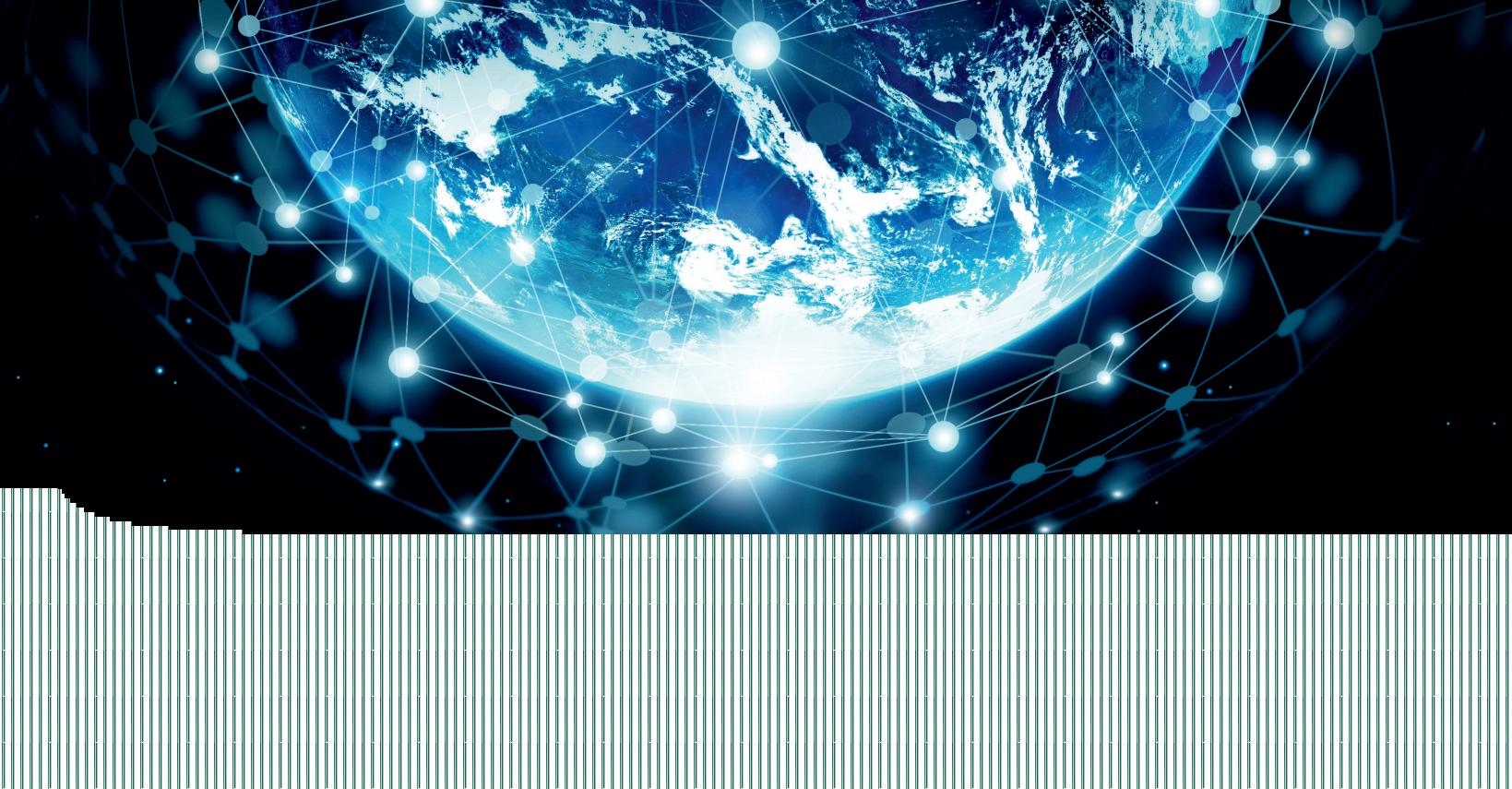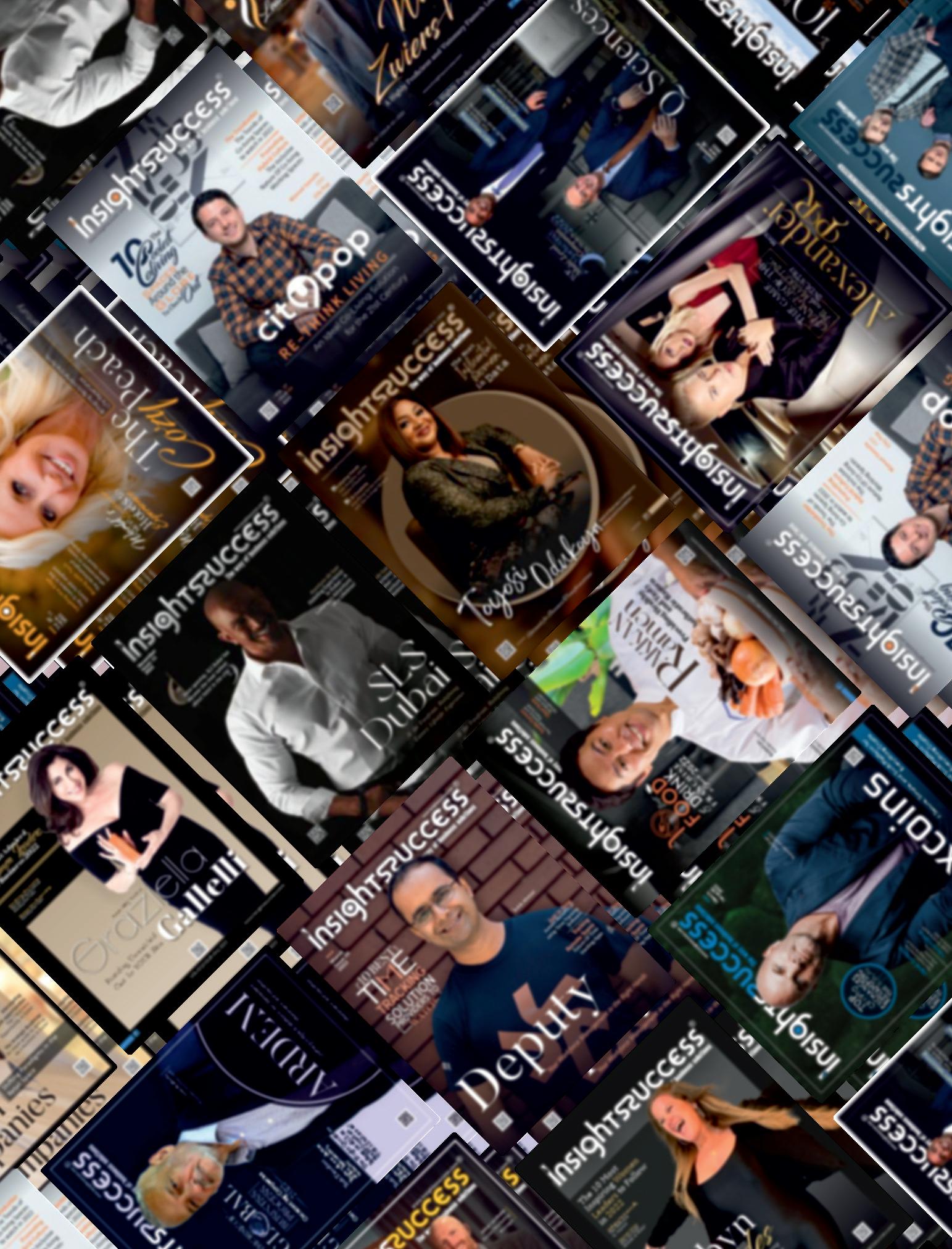
















In every era, there are individuals who stand out—not
merely because they lead, but because they inspire a generation to rethink what leadership means. As Insights Success presents Leader of the Now: 2025’s Most Inspiring Minds, we celebrate those visionaries who are shaping industries, uplifting communities, and leading with purposeandconviction.
AttheheartofthiseditionisKanakKantiRoy,aremarkable figure whose journey embodies resilience, clarity of vision, andtransformativeleadership.Hisabilitytomergestrategic foresight with authentic human connection makes him a beacon for those navigating today’s rapidly shifting professional landscape Kanak’s story is not just about achievements;itisaboutimpact—onpeople,onsystems,and onthefutureweareallbuildingtogether
This special edition brings together trailblazers across disciplines, united by one defining trait: the courage to lead now. In a world grappling with uncertainty and evolution, these leaders rise with bold intent, adaptability, and an unwavering commitment to innovation They redefine successnotasasolitarysummit,butasacollectivejourneyof empowerment.
As you turn through these pages, we invite you to explore storiesofvision,grit,andpurpose.Lettheseprofilesservenot only as inspiration but also as a call to action—to lead, to uplift,andtomakeameaningfuldifference.
HappyReading!

Kanak Kanti Roy Journey from Curious Engineer to Strategic Data Leader F E A T U R I N G
Ethical AI in Machine Learning Pipelines
18 The Future of Digital Innovation

Art
Business
Business
Digital
Co-designer
Marketing




















Principal Data Engineer
LatentView Analytics
The most influential leaders are those who bring
humanity to the core of technology in a time when datadrivesdecision-makingandinnovationhappens atbreakneckspeed.OnesuchleaderisKanakKantiRoy,a pioneer in the field of data science whose work is exemplifying a unique fusion of strategic vision, analytical nuance,andcompassionateleadership.Buildingclarityfrom complexity is a recurring theme in his journey from an inquisitive mind in India to a renowned digital pioneer influencinguserexperienceatmultinationalbehemoths.
He is currently working with Google's YouTube team to design petabyte-scale behavioral data systems in his current role as Principal Data Engineer at LatentView His real talent, however, is in comprehending people how they connect, think, and make decisions rather than the code and algorithms. Having worked with Infosys, Apple, and now Google, he has developed data-driven solutions that are enhancingpeople'slivesinadditiontooptimizingmetrics.
He is the one who firmly believes in leadership through context and caring, promotes inclusive decision-making, psychological safety, and purpose-led innovation. He also received recognition as one of the "Most Innovative Tech LeadersfromtheUSA–2025"becauseofhisabilitytostrike a balance between accuracy and speed, strategy and execution,andinsightandempathy
Hisstoryisaboutdirection,notjustnumbers.Heisstanding upforanewbreedofleaderswhorecognizethatintentionis what counts most in an information-rich environment. Roy keeps redefining what it means to lead in technology with clarity and compassion through his developing work and groundedworldview.
TheFoundation:WhereCuriosityMeetsPurpose
Roy'sstorybeginsnotwithgrandambitionsbutwithsimple fascination.GrowingupinIndia,hewasthekindofchildwho asked "why" more often than "what" intrigued by systems, patterns,andtheinvisibleforcesthatdrivehumanbehavior."I was always curious about how things worked beneath the surface. Why do people behave the way they do, how small signalscouldinfluencebigdecisions."Royreflects.
This natural curiosity found its first professional expression during his four-year tenure at Infosys, where he worked on analytics and data science solutions for Apple's media ecosystem. It was here that a pivotal realization struck him: data wasn't just numbers on a dashboard, it was a language thatcouldbridgeusers,products,andbusinessgoals.

“Lead with intention, not just ambition. Leadership isn't about titles or authority about responsibility, influence, and clarity.”
“I saw how even subtle behavioral signals could drive massive product shifts. That realization stayed with me." he recalls.
The transition from Infosys to pursuing a Master's degree in Business Analytics with a specialization in Data Science at the University of Texas at Dallas wasn't just an academic decision,itwasstrategic.Herecognizedthattomakedeeper impact,heneededtobridgethegapbetweentechnicaldepth and strategic thinking. His excellence was recognized with the Dean's Excellence Scholarship, an early indicator of the leadershippotentialthatwoulddefinehiscareer
TheAppleYears:BuildingExcellenceThroughIntention
Roy's five-year stint at Apple as a Data Science Engineer proved to be transformative. In a company renowned for its attentiontodetailanduser-centricdesignphilosophy,hebuilt large-scale analytics systems, enabled causal inference models, and refined data techniques that would influence productdecisionsaffectingmillionsofusersworldwide.
Apple taught him that excellence is about intention, not just intensity. The experience went beyond technical skillbuilding; it was about developing what he calls "leadership muscle” the ability to see systems holistically and make decisionsthatresonateacrossmultiplestakeholders.
During hisApple tenure, Roy wasn't just building pipelines, hewasshapinghowproductsunderstoodandinteractedwith theirusers.






“Leadership isn't about command and control. It's about context and care. When people feel understood and supported, they don't just deliver, they thrive.”
Fromcausalinferencemodelstointelligentexperimentation frameworks,hisfocusremainedconsistentlyonimpactrather than mere insight. "I realized that my profession was about buildingclarityfromcomplexity,"hesays.
TheConsultingEvolution:ScalingImpactatGoogle
Today, as Principal Data Engineer at LatentViewAnalytics, Roybringshisrefinedphilosophytohisconsultingworkwith Google'sYouTubeteam.Hisroleinvolvesbuildingpetabytescale behavioral data systems, decoding complex user journeys, and translating them into product strategies that driveresponsibleandintelligentgrowth.
Thescopeofhiscurrentworkisstaggeringdealingwithdata volumes that would have been inconceivable just a decade ago,whilemaintainingthehuman-centeredapproachthathas become his signature. "It's not just about being data-driven. It's about being human centered in how we use data." Roy emphasizes.
His approach to product analytics goes beyond traditional metrics. he focuses on understanding the 'why' behind user behavior, employing sophisticated techniques like uplift modeling to reduce marketing noise and improve user onboarding experiences. This methodology has earned him recognitionasoneofthe"MostInnovativeTechLeadersfrom the USA - 2025" by TradeFlock and "The Most Dynamic LeadersMakingaDifferencein2025"byTheBusinessFame.
TheLeadershipPhilosophy:EmpathyMeetsAnalytics
What sets Roy apart in the highly technical world of data science isn't just his analytical prowess, it's his leadership philosophyrootedinempathyandintentionality "Leadership isn't about command and control. It's about context and care. When people feel understood and supported, they don't just deliver,theythrive."heasserts.
This approach has been refined through years of crossfunctionalcollaborationandteamleadership.Hebelievesthat great leaders listen more than they speak, ask the right questions, and create environments where the best ideas can emerge regardless of their source His emphasis on psychological safety and inclusive decision-making has becomeamodelfordata-drivenorganizations.
One of his most significant leadership insights involves the balancebetweenprecisionandvelocity Earlyinhiscareer,he admits to "overengineering solutions, polishing things endlessly before showing progress." The evolution came through understanding that in today's fast-paced tech environment, "velocity and iteration are just as critical as precision."
Navigating Challenges: The Human Side of Data Leadership
Roy's journey wasn’t without its challenges. The transition from India to the United States represented more than a geographical shift—it was what he describes as "a mindset transformation."The cultural adaptation, combined with the pressure of working at the world's most demanding tech companies,requiredsignificantpersonalgrowth.
"There were times I struggled to balance ambition with wellbeing. Times when feedback stung, or when outcomes didn't matcheffort."Roycandidlyadmits. However,thesesetbacks became catalysts for deeper self-understanding. He learned thatgrowthisn'talwaysverticaloften,it'sinward.
This personal evolution has informed his approach to worklifebalance,whichheviewsnotasadailyequilibriumbutas "continuous recalibration." Roy has developed intentional practices—morning reflections, evening walks, unplugging fromscreens—thatcreatewhathecalls"mentalwhitespace" wherehisbestideasareborn.

“I was always curious about how things worked beneath the surface. Why do people behave the way they do, how small signals could influence big decisions.”
His four-legged companion, Kulfi, plays an unexpected but significantroleinmaintainingperspective. "My dog reminds me that joy often lives in the smallest details," Roy notes, highlightinghowpersonalgroundinginfluencesprofessional excellence.
The Innovation Mindset: Turning Complexity into Clarity
Roy's professional reputation is built on his ability to transformcomplexdataecosystemsintoactionableinsights. His work spans the full spectrum of modern data science—from behavioral analytics and causal inference to growthexperimentationandethicalAIimplementation.
Whatdistinguisheshisapproachistheintegrationoftechnical sophisticationwithstrategicbusinessthinking.Whetherhe's designing systems for user journey optimization or building frameworks for intelligent product experimentation, Roy maintainsfocusonlong-term,sustainablevaluecreation.
His recent recognition among the most innovative tech leaders is reflecting not just technical achievements but his contribution to evolving how organizations think about data ethics and responsible AI. "I care deeply about building a future where data is used responsibly—to empower, not exploit;toilluminate,notoverwhelm."hestates.
VisionfortheFuture:DataasaForceforGood
Looking ahead, Roy's vision extends beyond technical innovation to encompass the broader role of data in society Headvocatesforwhathecalls"meaningful,scalableimpact” using data science not just to optimize metrics but to create genuinevalueforusersandcommunities.
Hisadvicetoaspiringleadersreflectsthisholisticapproach: "Leadwithintention,notjustambition.Leadershipisn'tabout titlesorauthorityaboutresponsibility,influence,andclarity." He emphasizes the importance of creating environments where others can thrive, where ideas are challenged respectfully,andwhereworkhasbothdirectionandmeaning.
Roy's mantra for success encapsulates his philosophy: "Success isn't about speed, it's about clarity, purpose, and empathy. Lead with intention, build what matters, and never stop learning." This guidance reflects hard-earned wisdom from someone who has navigated the highest levels of tech innovationwhilemaintaininghishumanity
As Roy continues to influence product strategies at Google and mentor the next generation of data leaders, his impact extendsfarbeyondthesystemshebuilds.Herepresentsanew paradigm in tech leadership one that combines analytical rigor with emotional intelligence, technical excellence with ethicalresponsibility
In an industry often criticized for prioritizing growth over humanity,leaderslikeKanakKantiRoyofferadifferentpath forward. His journey from curious engineer to strategic data visionary demonstrates that the most powerful technology emerges when human understanding guides analytical capability
Intheend,theimpactisn'taboutdoingmoreit'saboutdoing what matters. In a world of endless data streams and algorithmic decisions, this wisdom feels both timely and timeless,areminderthatbehindeverydatapointisahuman storywaitingtobeunderstoodandserved.
Throughhisworkattheintersectionoftechnology,behavior, and business, Kanak Kanti Roy continues to prove that the futureofdatascienceisn'tjustaboutbuildingsmartersystems aboutbuildingsystemsthatmakeusmorehuman.











While artificial intelligence is reshaping industries and the game of decision-making, the role of ethicsintheAIsystemismorecrucialtodaythan at any moment of human history Machine learning (ML) pipelines—the regulated processes by which data moves, models learn, and predictions are generated—have emerged as the backbone of intelligent systems. Power so great, however,demandsresponsibilitysogreatinlikemeasure.
Since these pipelines make increasingly autonomous decisionsregardinghealthcare,money,education,andcrime, it is imperative that the systems align with society's values. ThatiswhereethicalAIcomesin.
WhatIsEthicalAIandWhyDoesItMatter?
Ethical AI is the rules and standards that oversee the deployment of artificial intelligence so that it is fair, clear, accountable, and compliant with human rights. It is not merely a matter of avoiding catastrophic failure—it's about designing systems that are fair to humans, respect their privacy,andareaudit-worthy.
In the ML pipeline ecosystem, ethical AI would involve examiningeverystepinthedevelopmentprocesstoseekout foreseeable harms before they cause damage A creditworthiness forecast model, say, might discriminate against particular racial or socioeconomic communities unintentionallyifit'sbeentrainedonbiasedpastdata.Afacial recognition program might perform well for lighter complexions but tank for darker complexions, bureaucratizinginjusticeundertheguiseofautomation.
Thesearethekindsofsituationsweareheadingtowards:ina new world, technological hegemony no longer guarantees socialprogress.Withoutanethicalfoundation,eventhemost advanced algorithms can end up exacerbating inequality ratherthaneliminatingit.
InordertofullyincorporateethicalAIintoMLpipelines,we must work alongside ethics as a priority, rather than an afterthought.Allstagesofthepipeline—datagatheringright through to deployment—offer opportunity and risk. Data collectionwilllikelybethefirstethicalissue.


The old adage "garbage in, garbage out" is most accurate whenappliedtomachinelearning.Ifsociallybiaseddataare usedfortraining,theresultingmodelwillreflectthoseflaws. Ethical data practice begins with the guarantee that the process of selecting data ensures equity and inclusion. It might involve auditing the data sets for bias, demographic balancing,andtransparencyregardingwhatdataareusedand why.
Atthetraininganddevelopmentphaseofamodel,ethicalAI meanschoosingthealgorithmsthatareamenabletofairness andinterpretability Itiskeepinginmindalwaysthechoiceof features and how these could be proxies for sensitive attributes such as gender, age, or race. Developers need not just ask what can the model predict, but if it should predict anything.
Validationandtestingisnotjustaboutcorrectness—it'sabout fairness.Amodel that is performing excellentlyoverall may beperformingbadlyforminoritysubpopulations.EthicalAI meansmodelsmustbetestedonthewaytheyimpactvarious sets of people This isn't just about testing technical performance, but social impact, harm, and differential treatment.
With respect to deployment, the ethical imperative is transparencyandaccountability Usersmustunderstandhow andwhyasystemisreachingitsconclusions.Whereamodel does err or does harm there must be avenues for examining, explaining, and correcting the errors. Ethical deployment also requires monitoring over time.AI systems are dynamic; they learn from new information, and so too musttheprotectionsthatoperatearoundthem.
WhilemuchofthediscussionaroundAIisaboutalgorithms anddata,ethicalAIisallaboutpeople.Whatwebuildactually hasreal-worldimpact—whetherapatientbeingdiagnosed,a hiring candidate screened out by a resume filter, or a citizen tagged as suspicious by an observer system. That human impact can't be dismissed with abstraction or left up to happenstance.
Building ethical AI means involving multiple voices in the design. Engineers and data scientists will have to work with ethicists, social scientists, community organizers, and impacted users. This cross-disciplinary approach will not only make AI accomplish corporate or technical goals, but alsoanall-aroundpublicgood.
Moreover, accountable AI requires responsibility culture in business. That is to encourage openness, to inspire ethical consideration,andtorewardthosewhoraisehardquestions. Ratherthanseeingethicsastheinnovationkiller,companies must see ethics as the force behind long-term and humanfocusedinnovation.
To give machine learning processes ethical integrity, there mustalsobegovernancearchitectures.Third-partyaudits,inhouse ethics committees, and open documentation can all serve to give assurance that ethical standards are being put into practice in fact as well as in intention. Adherence to internationalbestpractices,e.g.,theEU'sAIActortheOECD AI principles, can similarly offer additional guidance and oversight.
It is also critical that users are provided with recourse when somethinggoeswrong.EthicalAIenablespeopletocontest, challenge,orappealalgorithmicdecisionsmadebymachines that impact their lives. Transparency, explainability, and human governance are the keys to establishing trust in AI technologies.
EthicalAIisultimatelyallabouttrust.Peopleneedtobeable totrustthatthetechnologiesmakinglife-changingdecisions aredoingsoontheirbehalf.Theyneedtobeabletotrustthat thosesystemsweredevelopedwiththoughtfulness,reviewed withintegrity,andimplementedwithaccountability.Trustis not created by announcing anAI system ethical—it is built withaction,withtransparency,andwithshowingadedication to doing the right thing, even when the right thing isn't necessarily the easiest thing. Short of it, applying ethicalAI withinmachinelearningprocessesisn'tatechchallenge—it's anethicalnecessity
Because machines are becoming larger and more active in nearly every aspect of existence, we must ensure that the systems are not only robust, but also equitable, just, and human.Itisonlywhenwedosothatwecanunwrapthetrue potentialofAI—notasanengineofautomation,butasaforce forgood.


Standing at the threshold of a technology-based world, thereisapowerthatispoisedtotransformeverysingle wayofourlifedigitalinnovation.Digitalinnovationis not just the implementation of new technologies; it is a revolution in the way we think, work, collaborate, and innovate.It is not just transforming industries but re-writing thesocialfabric.
From connected homes to digital medicine, the depth and breadthofdigitalinnovationaresignificant.Butwhatisnext? Andhowdowemakethisinnovationhumanandimpactful?
Digital innovation is merely the art of using technology to drivebusinessmodels,services,operations,andexperiences forward.Butitissomuchmorethansimplythedigitizationof what we currently do. True innovation shatters the box—it rebuilds the potential. Consider it: there is an established media world, and then there are streaming platforms that disrupted it, or telemedicine that brought medicine to farflungplacesinthemidstofgloballockdowns.Thesearenot enhancements—these are resurrections, the product of the convergence of human innovation and technological capability.
Thispaceofdigitaltransformationisfueledbyseveralforces. One of them is the extremely high pace of technological development itself. Technologies like artificial intelligence, machine learning, and the Internet of Things are no longer fictionalconcepts—they'repillarsnow.Anduserbehaviorhas changed in between. Users now expect quick, seamless, and customizeddigitalexperienceswhenthey'reshoppingonline, transactingmoney,orlearning.
Global interconnectivity has also rendered innovation more liquidandcollective.Withbillionsonline,newconceptscan be experimented with, iterated, and scaled in real-time. In addition, recent global catastrophes—COVID-19 included —have acted as unintentional accelerators. Companies that hadbeenhesitanttousedigitaltoolswerecompelledtodoso overnightandprovedthatnecessityremainsagreatmotivator forthemostimpactfulinnovation.
Digitalinnovationismakingitspresenceknowninavariety of industries. Healthcare, for instance, is during a digital renaissance Artificial intelligence-based diagnostics, wearables, and virtual consultations are enhancing patient careandhealthservicesreachingpeoplelikeneverbefore.In education, digital platforms are transforming the learning process. Personalized learning experiences, virtual classrooms, and game-based modules are engaging learners likeneverbefore.
Finance is one of the sectors where digital disruption is makingwaves.Fintechwebsites,blockchaintechnology,and AI investment websites are revolutionizing saving, investment, and money-making. And the retail sector is revolutionizing customer experiences with immersive technology and product-based innovations. Even traditional manufacturing is being transformed by smart factories, robots,andreal-timedataanalysisforpeakperformance.
For all of its great potential, digital innovation has its own challenges. Cybersecurity threats, information privacy, and thedigitaldivideareareasofconcern.

Technologyisstillnotyetequallyaccessibletoeveryone,and these risks perpetually widening the gap between those who canridetheinnovationwaveandthosewhichcannot.
And then, of course, there is the human factor—change is frightening. For most companies, digitization is rewriting establishedsystemsandretrainingworkforces.Resistanceto change, ignorance of the digital world, and ethical concerns over AI and machines must be addressed with care and together.
Inalltechnology,rememberthatdigitalinnovationisallabout human beings. The most critical thing is something which solves real human needs. That is to say, making solutions which are not only useful but intuitive, accessible, and inclusiveaswell.
Empathic design and human-centered development become more relevant Technology is there to augment human capability,notreplaceit.Asacaseinpoint,AIcanautomate routine tasks, but creativity, emotional intelligence, and criticalthinkingareskillsinimitablyhuman.Goodinnovation is about finding that balance between the efficiency of the machineandthewisdomofhumanity.
The coming years will witness even more revolutionary changes.Quantumcomputers,virtualreality,brain-computer interfaces, and decentralized technologies like Web3 will likely redefine how we access information and engage with each other. Sustainability too will become a much greater concern,withdigitaltechnologieshelpingtomonitorenergy use,reducewaste,andpromoteeco-friendlyinnovation.
Wecanalsoexpectdigitalinnovationtoshiftfromreactiveto proactive. Technologies will anticipate user needs, offer predictive intelligence, and enable solutions ahead of problems emerging. This shift will usher in a smarter, more networkedworld.
The future of digital innovation will also be massively collaborative Inter-disciplinary collaboration between scientists, technologists, designers, educators, and policymakerswillbeessentialinfurtheringsolutionsthatare fair,moral,andeffective.
It is not necessarily any technology, but attitude, that will definethefutureofdigitalinnovation.Havingthecapacityto always be questioning, learn how to change and be open to being thoughtful in taking risks will be rewarded for individuals,andforbusinesses.Inaneraofchangeastheone and only constant, it will be those who view innovation as muchphilosophy,asmechanism,thatwillcarryusforward.
Digital innovation is not a trend, but a fresh worldview by which we conceive opportunity, solve issues, and construct thefuture.Throughit,wecanmakethedigitalworldweare buildingnotjustmoreintelligent,butmorehuman.





For Subscrip�on: www.insightssuccessmagazine.com
www.x.com/insightssuccess

